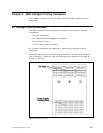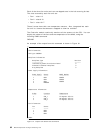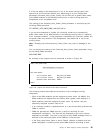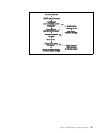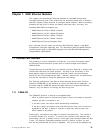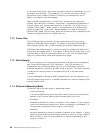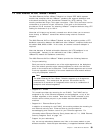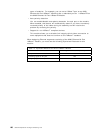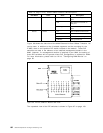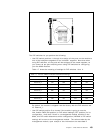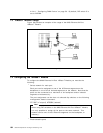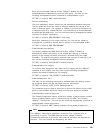to 16 times consecutively, after which the station reports a transmission error to
the higher layer protocol. The probability of a collision occurring is directly
proportional to the number of stations, frequency of transmissions, size of
frames, and length of the LAN segment.
Under the 802.3 specifications, no station can monopolize the network by
sending more data than is allowed. Occasionally, a misbehaving application or
a faulty adapter may transmit more data than is allowed. This gives rise to a
condition called
jabber
.
Jabber
refers to the transmission of a packet whose
length is greater than 1518 octets. Where repeaters are used to extend the
Ethernet LAN, jabber can also occur when the transceiver that is attached to the
repeater has Signal Quality Error (SQE) set to on.
7.1.2 Frame Size
In the Ethernet LAN environment, all data transmission must occur using
Ethernet or IEEE 802.3 frame formats. For details on Ethernet and IEEE 802.3
frame formats, please refer to
LAN Concepts and Products, GG24-3178-03.
IEEE 802.3 and Ethernet specify a minimum frame size (header plus data) of 64
octets while the largest frame is 1518 octets. A packet whose frame size is less
than 64 octets is called an
undersized packet
or a
runt
and
oversized packet
refers to a packet whose frame size exceeds 1518 octets.
7.1.3 Data Integrity
To ensure integrity of the data being transmitted, each data frame is appended
with Frame Check Sequence (FCS) information. The FCS information is
computed by the transmitting station using a cyclic redundancy algorithm
executed against the contents of the data frame to be sent. The same algorithm
is used by the receiving station to recompute the FCS on the data frame
received.
A
Cyclic Redundancy Checksum (CRC) Alignment Error
will be reported by the
receiving station when there is a mismatch between the receiver-computed FCS
and the sender′s FCS.
7.1.4 Ethernet Addressing Mode
In Ethernet, there are three types of addressing modes:
•
Direct addressing
In the direct addressing mode, the sender station has to know the Ethernet
address of the receiver station before communication can occur.
•
Broadcast
Broadcast addresses a frame to all stations in the network. It uses a special
code in the destination address field. When a broadcast is transmitted, it is
received and processed by every station in the network.
•
Multicast
Multicast addresses a frame to a subset of stations in the network. It uses a
special
group address
to allow multiple stations to listen to a single address.
When a frame is sent to a group address, all stations subscribing to that
group will receive it.
98 8260 Multiprotocol Intelligent Switching Hub




